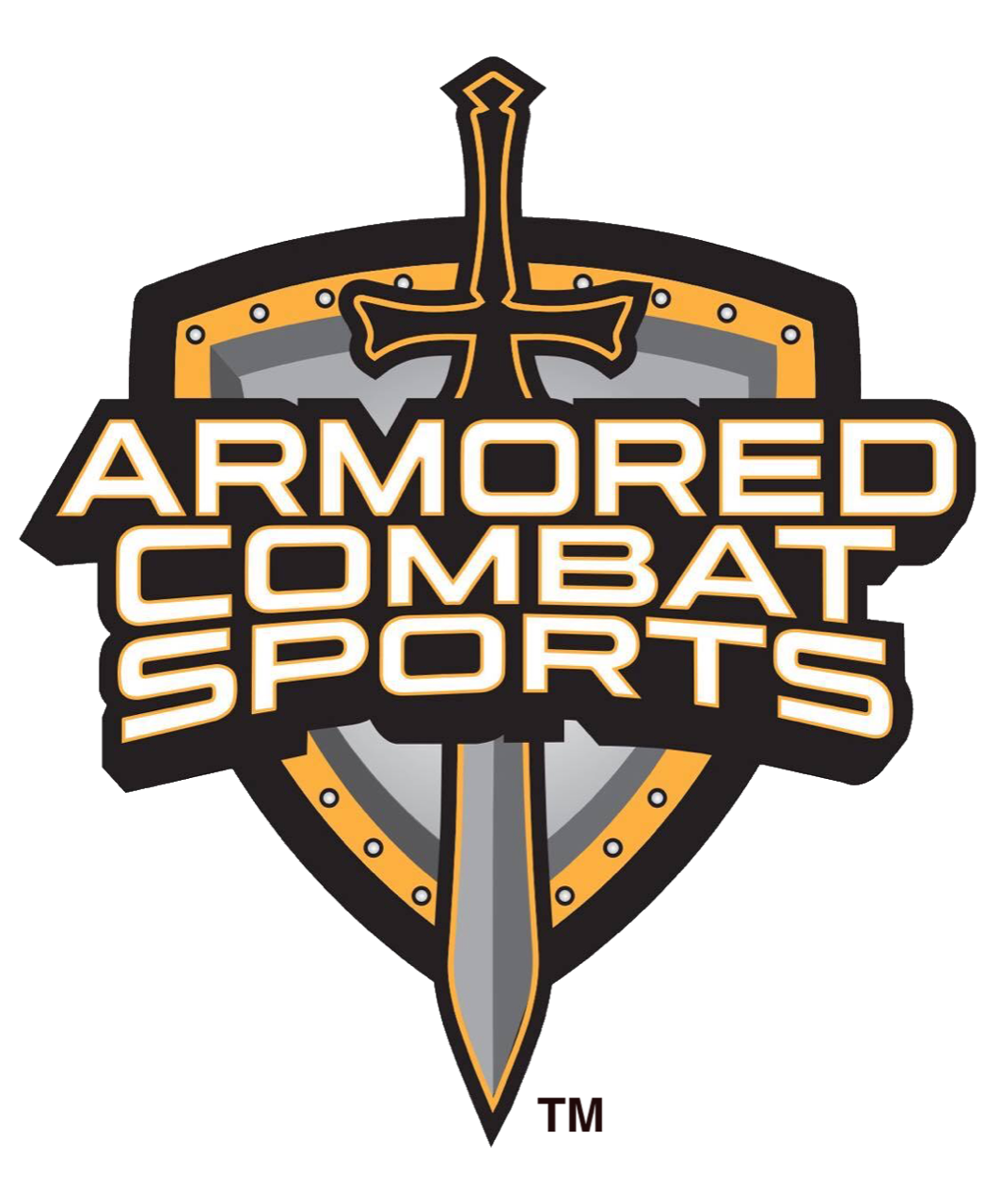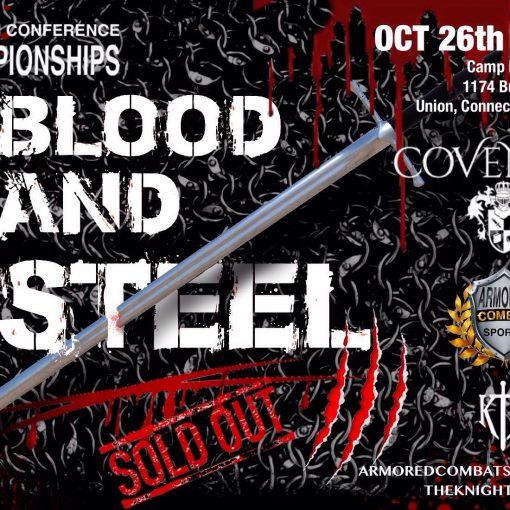An Introduction to Field Positions And Expectations:
By Evan Ringo
Evan Ringo, or just “Ringo” as he is known around the Hall, has been training at The Knights Hall, New Hampshire, since 2013. In 2014 he started fighting in armored combat and in 2015 he won the North American title as Long-sword Champion. Ringo joined the USA Knights Team and competed in the 2015 IMCF World Championships in Poland for Long-sword and the 16 v 16 man team, bringing home the Silver. Ringo is on the Regional Team for The New England Executioners and served as Captain for the Manchester Monarchs for three years. Ringo has also competed in the IMCF World Championships , Portugal-2016 and Denmark 2017. |
Positions and Roles:
In ACS Melees, also called Bohurt, there are 2 primary ways of breaking down a team, Positions and Roles. A position label is about where one is supposed to move in regards to their team and a role label defines how a person interacts with members of the opponent’s team. While there is crossover between roles and positions it’s entirely possible to break down a team structure and devise strategies using only one set. In fact it is preferable to how a thorough understanding of both separately first before thinking about how the two sets of labels interact. Looking at positional play and how a team designs it’s tactics around where people move will give you a good sense of how battles are likely to play out. Looking at roles and the different weapons used will help you understand when opportunities arise, what to do in those situations, and how individual fights go down. Once familiar with both concepts you can begin to think about how they intertwine. I’ll be giving detailed breakdowns of each in the coming weeks concluding with an article on ways to experiment with the knowledge accumulated so far. For now that I’m going to just give a high level overview.
Positions
There are currently 3 positions formalized by the USA Knights. centers, guards, and flankers. In general the center is a stable point, usually fixed to the rail and moves little. Guards sit off his shoulder making sure no one gets into the back field. Flankers move through the open field away from the main body, hoping to get into the back field and cause chaos. The standard line up differs depending on what form and who’s available but mostly looks like, a center on the rail with 1-3 guards angled behind him. They pretty much walk straight down the rail looking to go straight into their opponents and keep the fight on the outside. Flankers take the other rail and try to find a way into the opposition’s backfield. In general positions are based off the 5 man line up which is 1 center, 2 guards, 2 flankers.
Centers are big immobile rocks. You want them to be strong enough to take the brunt of the impact with another team and stay standing. They tend to be the anvil more than the hammer, grabbing guys and turn them into guards with higher damage or flankers running in with speed. Centers main offensive move is to grab and crush/toss if the person is small enough. They are focused on being unstoppable forces that let you claim field position.
Guards are usually your scorers, your killers. While the term may indicate they are protecting the back field or the center, which they do, these are traditionally the guys you have dropping people. They catch flankers who come into close to the line, they toss the opposing guards and they wreak havoc on any center that gets turned away from the rail, punishing him till he has to quit.
Flankers are your mobile unit that opens the field up. They will get some of your kills catching opponents off guard but most of what they exist for is to cause havoc with penetrating runs. They are your speed force and need to be the most tactically aware because they will be making runs designed to create 2 on 1 or 3 on 1 situations, which if done poorly will expose 2 on 1 or 3 on 1 for the other team.
Roles
There are 4 roles that we discuss at the knights hall. There may be room for more but these are the ones we’ve broken out. Grapplers, Strikers, Punishers, and Runners. The names are fairly self explanatory but to be thorough I’ll walk you through them quickly. The names refer mainly to how you put your opponents down or fight them. So Grapplers grab opponents and try to throw them. Strikers unload lots of strikes hoping to overwhelm them and force them down. Punishers drop one or two heavy hits that deliver enough pain or physical trauma to force a person down. Runners check and trip opponents at speed causing them to fall. People can have multiple Roles on the field while they usually only have one position per match. It’s a breakdown more for training and figuring out who to play at what position.
Grapplers are often the first role people get because it’s relatively easy to just grab someone and hug. However that doesn’t mean this isn’t a role without skill. Effective grapplers know when to leave and when to throw. They have an arsenal of trips, throws, drags, pushes, meant to overbalance and force their opponent down. They are also effective set up men for strikers and punishers, knowing how to stretch and opponent out and pull away their guard so they are an open target. Lastly they are ready to capitalize on any movement their victim makes trying to avoid the pain of a striker or punisher. Grapplers need to be comfortable on the rail and near bodies, have strong arms and a strong base, a great sense of balance, and deep endurance as wrestling saps your energy fast. Every Center needs to be a grappler, and guards should have a decent understanding of the skill set. It is not necessary for a flanker but it is helpful.
Strikers are primarily the second skill people learn and are often more set up men or closers. They rarely take someone down on their own thought it’s possible. In general their job is to weaken or distract an opponent so a grappler, punisher, or runner can put them down depending on field position. They are also able to capitalize on open gaps and rain repeated damage down until a person quits but this can be a long time depending on the fighter. It is not my preferred use of a striker. A strikers skill set is not just weapons work, indeed some would argue that weapons are inferior. I hold that all forms of striking are good. You need a good kick and kneed game, you’re punches need to sharp, quick, and damaging, and your weapons work needs to be hard, fast, and accurate. A striker can easily overwhelm an opponent with well timed, hard, continuous striking, and through this take field position, keep a dangerous enemy out of play, and set up plays for the more dangerous members of the team. Striking is an invaluable skill for a flanker, necessary for a guard, and it’s a poor center that hasn’t learned the basics.
Punishers are your big hitters. They drop people in one or two shots. They need to be protected and kept free so they can work. A punisher needs to have power in their swing but that is just the tip of the iceberg. They need perfect placement of the weapon so they don’t waste their shots. They need mobility so they can get to the plays their team has set up for them. They need field awareness so they can keep track of where their targets are but also not get cleaned out on their way to ending a person. Punishing is the hardest role to achieve basic competency in. Mastery I don’t speak on, but to get to just being able to do it takes far more practice and time than the others. It is also the only role that requires weapons work. The other roles are benefited by knowing how to use a weapon, but it is required in pushing. You can’t drop a person through pain with just a punch or kick. It won’t happen, it needs to have the multiplier factor of force that comes with a weapon. In addition in terms of pure skill set it is the least practical. If you have only pure punishers the least practical. a 5 man team of just punishers will get munched by a more diverse line up. You need your grapplers and strikers, your set up men, to give the punishers their opportunities to do work. I would argue you never have more than 2 pure punishers on the field at a time. However a skill punisher will often have aspects of other roles if not mastery. Punishers are adept at any position and every position is improved by having this skill set.
Runners. In a way this role doesn’t fit the others. You can think of grappler, striker, punisher, as a progression. Most people come in as grapplers, learn some weapons work and become strikers, and if they are good, master the weapon to become punishers. However Runners don’t follow that line. It is an entirely separate skill set and way of approaching the game. Runners need to be fast, understand the field, and be able to find opportunities to check people from behind or the side. It’s physically all about explosive power, but mentally it’s about knowing the field and being able to open up gaps and lanes. Flankers need the runners skill set and while it’s helpful for guards, it’s very rare that a center will use this skill set.
People often have more than a single role, even in a given match. They rarely play more than a single position, though knowing how to step into another position can add a huge amount of variety to your plays and redundancy to your team make up. The way positions are used changes fairly dramatically as the size of the field increases. they are practically meaningless in 3v3 for exemplar and while flankers rule the day in the 5v5 and 10v10, on the 16v16 they are impractical and hard to bring to bear. Roles are a fairly standard across the different levels, but it’s hard to build a team strategy around them. They work great for monetary tactics and small plays can be developed using them, but when coming up with field positioning and such, Positions live up to their names. Over the next few months I intend to write pieces delving deep into each position and role, as well as talking about the potential for new areas of classification. I hope this will be a valuable resource for both new and veteran fighters.
This is meant to a primer that will help alleviate confusion entering the sport not the end all be all guide to bohurt tactics. It builds on work that some others have done which will be linked later. It would be nice to get a repository of all words written on the topic and if anyone wants to help with that project please contact me.





